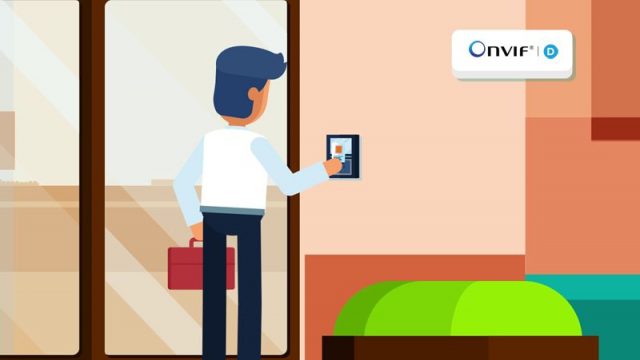ONVIF continues to enable market innovation with the release of Profile D, a new profile addressing interfaces for access control peripheral devices. This new profile will provide the market with an additional tool for building modern and secure IP-based integrated video and access control systems using ONVIF.
In a time when smart, integrated building technologies are in high demand to help businesses safely reopen in the wake of the COVID-19 pandemic, facilities will want the flexibility of choosing best-of-breed solutions to help address a variety of security and business needs. Profile D will provide ONVIF interoperability for peripheral devices, such as locks, credential/biometric readers, PIN pads, license plate recognition cameras, door phones, sensors and displays. These types of peripherals commonly require specific integrations between products from different vendors to be able to incorporate them into an access control management platform.
“Users are increasingly looking to incorporate additional technologies into their access control systems for use in innovative ways, such as bar code reading cameras for visitor management or video door stations for intercom applications,” said Patrik Björling, Chair of the ONVIF Profile D Working Group. “Profile D provides a standardized way to satisfy this demand for interoperability, which can in turn drive additional opportunities for more use cases for peripheral devices.”
Using Profile D, a peripheral device, such as a wireless lock or license plate recognition camera, can pass credential identifiers to a securely located Profile D conformant client, such as an access control unit or management software. The client or controller, which stores access rules, schedules and credentials, can then take the access decision and send a command back to the peripheral device to grant or deny access, display a message or request additional input such as a PIN code. Having sensitive information on a separate controller in a secured area enhances security. Communications between the device and client are secured using ONVIF security protocols such as TLS.
ONVIF Profile D complements Profile A and Profile C in enabling standardized communications in an IP-based electronic access control system. Profile D devices can also support video profiles such as Profile T and Profile M to enable an integrated video and access control system using ONVIF interfaces.
More information about Profile D can be found here.






